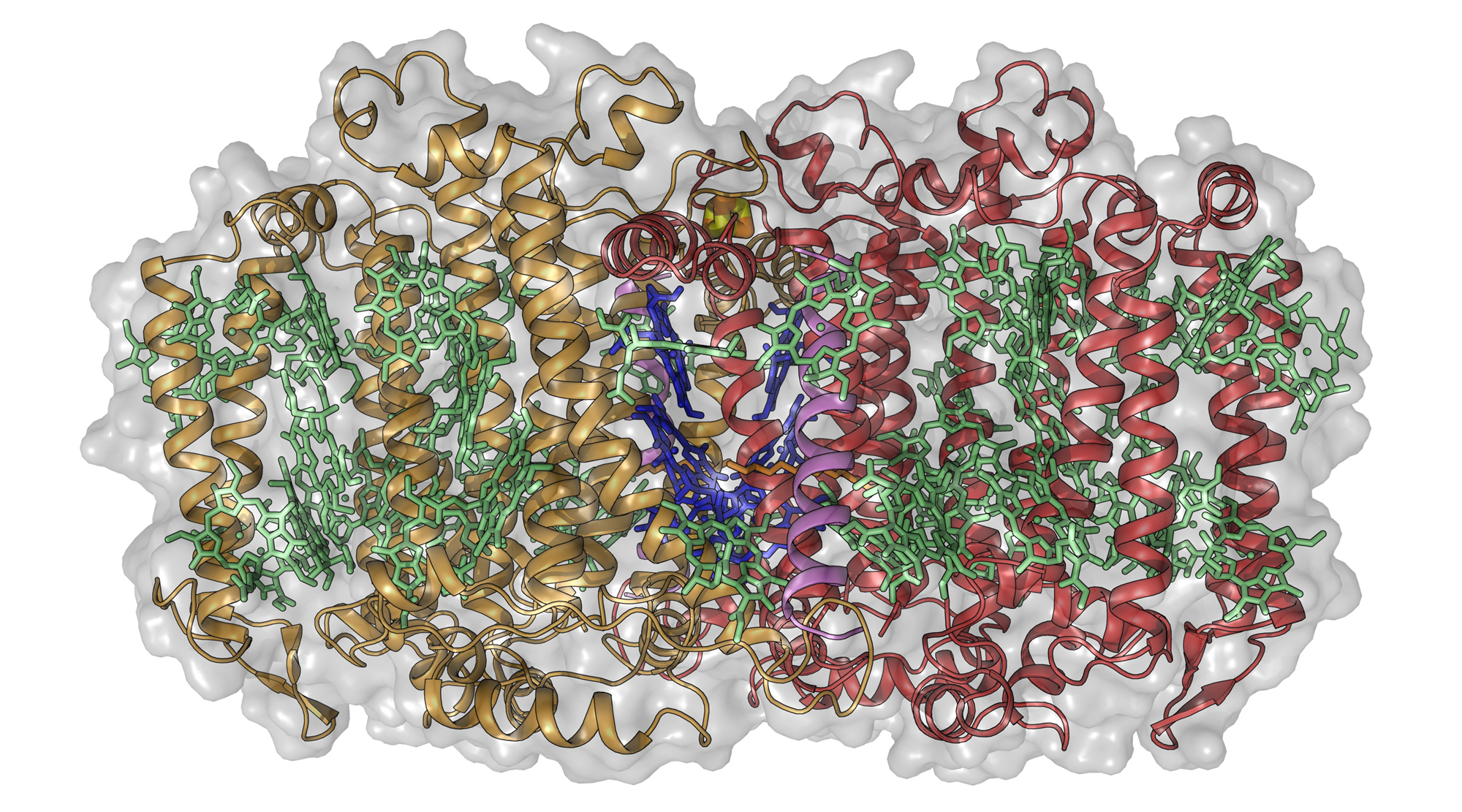The simplest known bacterium able to drive photosynthesis is found in muddy soils near hot springs. Heliobacterium modesticaldum is a sun-loving, soil-dwelling, thermophilic bacterium that photosynthesizes near-infrared light, unlike plants, which use different parts of visible light. The photosynthesis reaction centers (RCs) of H. modesticaldum are thought to resemble the earliest common ancestor of all photosynthesis complexes, which evolved around three billion years ago. A clear, detailed picture of the H. modesticaldum RC would therefore provide valuable insight into the early evolution of photosynthesis. However, successfully purifying an RC protein and growing the crystals needed for x-ray crystallography can be a lengthy, difficult process.
At ALS Beamline 8.2.1, a team led by researchers from Arizona State University successfully capped seven years of painstaking work by obtaining a high-resolution (2.2 Å) structure of the membrane protein at the heart of the photosynthetic RC of H. modesticaldum. The structure revealed details such as the interactions between light-harvesting “antenna” molecules and the electron-transfer chain, where the initial steps required to convert photon energy into chemical energy occurs. With this data, the research team was able to make comparisons to other types of RCs, gaining new perspectives on the early evolution of photosynthesis and how nature optimized light-driven energy collection. The work brings us a step closer to unlocking the secrets of photosynthesis, and possibly to the development of cleaner, solar-based renewable energy.

Work performed at ALS Beamline 8.2.1.
C. Gisriel, I. Sarrou, B. Ferlez, J.H. Golbeck, K.E. Redding, and R. Fromme, “Structure of a symmetric photosynthetic reaction center–photosystem,” Science 357, 1021 (2017), doi:10.1126/science.aan5611.
For further information, see the Arizona State University news releases, “ASU team shines new light on photosynthesis” and “A new picture emerges on the origins of photosynthesis in a sun-loving bacteria.”